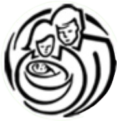Is it Reflux?
The term reflux is often overused and is casually tagged as the culprit for a myriad of symptoms or gastrointestinal discomforts. Nearly every baby experiences gastroesophageal reflux (GER), which is the movement of stomach contents back into the esophagus. In infants, GER is a form of reflux where milk is regurgitated after a feeding, commonly referred to as spitting up. Babies are more susceptible to reflux due to being born with a weaker lower esophageal sphincter, which allows for easy movement of stomach contents back into the esophagus. GER turns into gastroesophageal reflux disease (GERD) when the lining of the esophagus becomes damaged.
According to Nancy Mohrbacher, the signs of GERD can include: irritation and inflammation of the digestive tract, resulting in pain; respiratory findings such as congestion, wheezing, pneumonia; and less common symptoms, including esophagitis, anemia, esophageal stricture, and apnea. In a baby with GERD, frequent crying, hiccuping, back arching, and difficulty sleeping are common symptoms1.Refusal to feed due to pain and resultant poor weight gain are more concerning signs and symptoms in a baby with GERD.
GERD can be confused with cow’s milk protein allergy (CMPA) or colic. CMPA is an atypical reaction to ingestion of the cows milk protein, causing injury to intestines or stomach, and is found in 2-6% of children in the first year of life. Colic is identified by crying for 3 or more hours a day, 3 or more times a week, for a period of at least 3 weeks. Fussiness and sustained periods of crying can be found in both GERD and colic. GERD has been identified as a possible cause of colic, but these diagnoses are not mutually exclusive. When a baby is labeled as “colicky,” often the search for a treatment is halted in anticipation of waiting out this period of fussiness, instead of pursuing proper diagnosis. Irritation to the digestive tract can be found with CMPA and GERD. With CMPA, there will be damage to the stomach and intestinal tract, leading to blood or mucus in the stools, whereas with GERD, the damage is found in the excoriations to the lining of the esophagus. Elimination of cow’s milk in the mother’s and infant’s diet for at least 2 weeks and resolution of symptoms will rule out CMPA. Due to the overlap in outward appearance, diagnosing and treating based on symptoms alone needs caution.
Other situations such as overfeeding or bowel obstruction can also cause GER1. Identifying how often and what volume of milk a baby is being fed or whether there are associated symptoms like nausea and vomiting would guide diagnosis. Thorough assessment and evaluation of all possible causes by a medical practitioner is required to determine the exact source.
GERD can be difficult to pinpoint in the babies who silently reflux and don’t spit up. In these babies, diagnostic testing may be necessary, such as a swallow study.
If you suspect your baby has either GER or GERD, diagnosis requires evaluation by a medical professional. If there are symptoms like frequent spitting up and associated fussiness, simple measures like keeping baby upright after feedings, avoiding use of the carseat when not necessary, and laying baby on the left side rather than flat on the back, may help. These non pharmacological methods are often employed first, but medications will be recommended if reflux becomes severe and interferes with the infant’s ability to rest.
When a baby experiences gastrointestinal upset this can include a myriad of ailments: diarrhea, milk allergy, gas pain, colic, or vomiting or reflux.
A baby who is breastfed will experience softer and looser stools due to the laxative effect of breastmilk. In a baby who is formula fed, or in cases where the stool is watery this is likely a symptom of viral or bacterial infection.
Allergy to the lactose in breastmilk or formula is rare and is usually diagnosed by ruling out other causes for symptoms.
Gas pain is common in babies under 3 months of life as their gastrointestinal system adjusts to life outside the womb. Gas pain is also often a result of swallowing too much air during feedings, infrequent pooping, or an irritating food in mother’s diet.
Colic is defined as sustained periods of crying in a baby less than 3 months of age, crying for 3 hours a day for a period of 3 weeks.
With so much of a baby’s time devoted to eating in the first few months, there is no surprise that gastric upset can also be an accompanying finding. Typical gastrointestinal upset in a baby less than 3 months old could be frequent spitting up or occasional gas pain. A typical gastrointestinal upset could result in bronchitis or pneumonia as a result of reflux. Reflux is defined as movement of stomach contents back into the esophagus, instead of digesting and moving downward.
Contributed by Danielle Chu, RN, BSN, IBCLC
